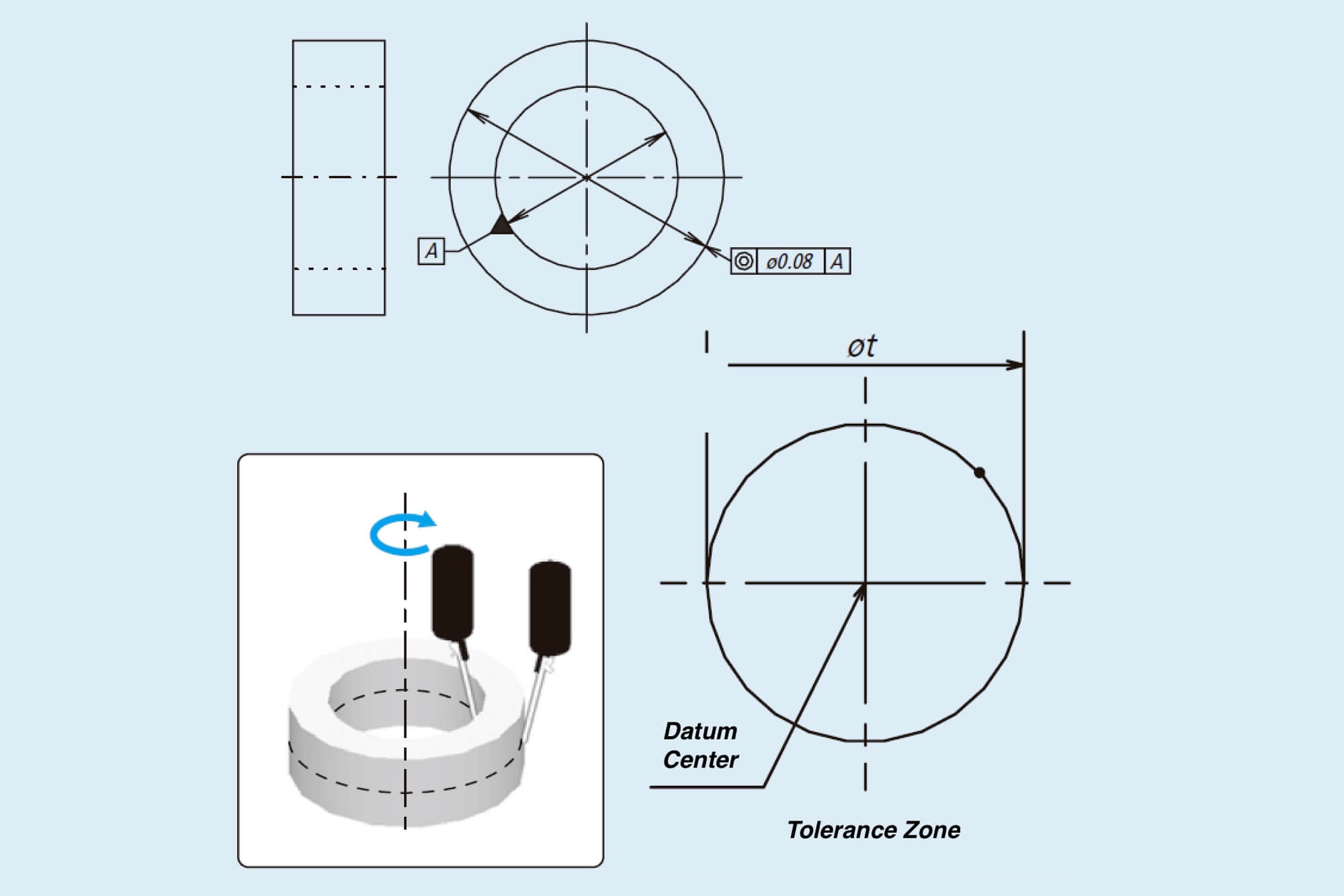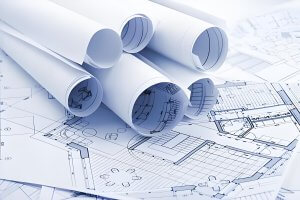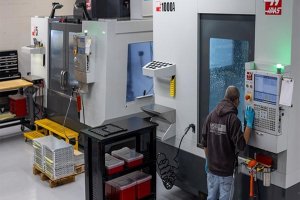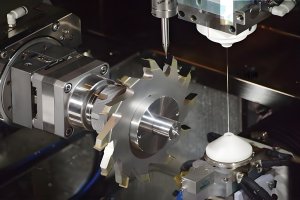Introduction to Concentricity in CNC Machining
If you’ve ever worked with CNC machines, you’ve definitely come across the term “concentricity.” But if you’re still unsure about what concentricity truly means or why it’s so important, you’re not alone.
In simple terms, concentricity is how closely multiple circular surfaces of a part share the same center or axis. When you’re machining parts for automotive, aerospace, or even medical applications, achieving accurate concentricity is essential.
I remember clearly the first time concentricity became a real problem for me. Several years ago, I was involved in producing precision shafts for a critical automotive project. The customer had incredibly tight tolerance requirements, and despite our best efforts, we initially struggled to hit those concentricity targets consistently. That experience taught me a lot about just how crucial—and tricky—concentricity can be.
In this article, I’ll share practical solutions and insights gained from firsthand experiences with CNC machining, design tips, measurement techniques, and troubleshooting strategies. By mastering concentricity, you’ll significantly enhance the precision, reliability, and quality of your machining operations.
Chapter 1: Understanding Concentricity
To solve concentricity challenges effectively, first, you must thoroughly understand it. Here’s everything you need to know.
What Exactly is Concentricity?
Concentricity is a geometric dimensioning and tolerancing (GD&T) concept. It’s about how precisely circular features on the same part align around a common centerline or axis.
Unlike runout or coaxiality—two concepts often confused with concentricity—concentricity specifically measures how the central axes of different cylindrical features align. Runout, meanwhile, considers surface deviation as the part rotates, and coaxiality typically deals with the alignment of two axis features, similar but with subtle differences.
Here’s a simplified way I usually describe it to colleagues:
- Concentricity: How aligned multiple circles or cylindrical surfaces are relative to the central axis.
- Runout: Surface variations when the part is rotated.
- Coaxiality: Alignment of two or more axes along the same line.
Why Concentricity Matters in CNC Machining?
From my experience, ensuring concentricity directly impacts component performance and longevity. Poor concentricity can cause vibration, excessive wear, noise, and early failure, especially in rotating machinery like engines, pumps, and gearboxes.
Let me share an example: Once, our workshop produced shafts for electric motors. Initially, slight concentricity deviations resulted in noticeable vibration issues. It led to customer complaints and costly reworks. After we understood and strictly controlled concentricity, product performance dramatically improved, eliminating complaints entirely.
Industry Standards for Concentricity
In CNC machining, industry standards define acceptable concentricity tolerances. The most common reference standard is ASME Y14.5. Typically, precision-critical applications might specify concentricity tolerances between 0.005 mm (0.0002″) to 0.025 mm (0.001″), depending on the application.
Based on my experience, here’s a simplified guideline table showing typical concentricity tolerances in various industries:
| Industry | Typical Concentricity Tolerance (mm) | Typical Concentricity Tolerance (inch) |
|---|---|---|
| Aerospace components | 0.005 – 0.010 | 0.0002 – 0.0004 |
| Automotive shafts | 0.010 – 0.020 | 0.0004 – 0.0008 |
| Medical devices | 0.005 – 0.015 | 0.0002 – 0.0006 |
| Industrial pumps | 0.015 – 0.025 | 0.0006 – 0.001 |
| Precision bearings | 0.003 – 0.008 | 0.00012 – 0.0003 |
| General machinery | 0.020 – 0.050 | 0.0008 – 0.002 |
This table gives a practical reference that I’ve personally found useful when planning machining operations.
The Impact of Poor Concentricity
Poor concentricity doesn’t just cause headaches in production—it can also impact your bottom line. Here’s how:
- Assembly problems: Misaligned components due to poor concentricity often cause delays or rework.
- Increased downtime: Equipment running with poor concentricity wears faster, leading to higher maintenance and downtime costs.
- Lower product quality: Customers quickly notice vibration, noise, or inefficiency caused by concentricity issues. It can significantly damage your reputation.
I experienced this firsthand when manufacturing gearboxes. Initially, minor concentricity issues led to gear wear and premature failure. Resolving concentricity reduced downtime and customer complaints significantly.
Misunderstandings Around Concentricity
During my years in CNC machining, I’ve seen plenty of confusion about concentricity—often mistaken for runout or coaxiality. So let’s clear this up:
| Aspect | Concentricity | Runout | Coaxiality |
|---|---|---|---|
| Measurement focus | Axial alignment | Surface deviation | Axis alignment |
| Measurement method | CMM, concentricity gauge | Dial indicator | CMM, coaxiality gauge |
| Application example | Shaft-bore alignment | Rotating shaft surfaces | Aligning two shafts |
| Typical tolerances | Very tight | Moderate | Tight |
| Complexity | High (harder to measure) | Easier | Moderate |
| Impact if poor | Vibration, alignment issues | Surface wobble, noise | Alignment issues |
These distinctions matter a lot practically. In fact, understanding them helped our team dramatically improve our precision standards.
Personal Experience with Concentricity
I still remember clearly a challenging aerospace project. We were producing turbine shafts. Initially, we misinterpreted concentricity requirements as simple runout. After realizing our mistake, we adjusted our measurement approach to a proper concentricity gauge combined with a CMM. This correction drastically improved part quality, meeting all customer specifications.
Since then, I always emphasize clearly understanding concentricity before starting production.
Chapter Summary
Mastering concentricity starts with truly understanding what it is, how it differs from similar terms, and why it’s critical. Accurate concentricity means better product performance, fewer customer complaints, and greater manufacturing efficiency.
Chapter 2: Concentricity in the Design Phase
From years working closely with CNC machinists, I’ve realized that achieving great concentricity starts long before the machine even powers up. In fact, concentricity success begins on the drawing board itself. If you don’t clearly define your concentricity goals in the design phase, you’ll face numerous production headaches later.
Here’s exactly how you can optimize concentricity during the design phase, based on my real-world experiences.
Clearly Specifying Concentricity in Your Drawings
First, make sure you’re explicitly indicating concentricity on your engineering drawings. In my early days, I assumed machinists would inherently know how precise I wanted parts. Big mistake. Clear concentricity callouts eliminate guesswork and confusion.
Below is a quick example illustrating how to specify concentricity clearly:
- Correct Example:
∅30.00 ±0.01 | Concentricity Ø0.01 to Datum A - Incorrect Example:
∅30.00 | Align with Datum A
The second callout seems okay at first glance, but it doesn’t clearly define the concentricity tolerance. This ambiguity often caused confusion for our machinists and quality control staff.
Typical Mistakes in Concentricity Design
I’ve encountered common design mistakes repeatedly—mistakes that made concentricity extremely difficult to achieve. To help you avoid these pitfalls, I’ve listed them below:
| Common Mistakes in Design | Issues Caused in CNC Machining | Recommended Solution |
|---|---|---|
| Vague concentricity spec | Unclear QC standards, increased rework | Clearly state exact concentricity tolerances |
| Unrealistic tolerances | Higher machining costs, unnecessary rejections | Specify practical, achievable tolerances |
| Poor datum selection | Misalignment, poor repeatability | Choose stable, accessible datums |
| Excessive feature lengths | Deflection, machining distortion | Limit length or support features adequately |
| Thin-walled features | Difficulties in clamping, deformation | Design thicker walls or add support structures |
| Complex shapes | Complicated fixturing, increased setup time | Simplify or modularize complex components |
In our automotive components project, designers initially specified overly tight concentricity tolerances of ±0.003 mm, far beyond necessary requirements. This decision forced our CNC team into repeated costly reworks. After discussing realistic standards (±0.010 mm), production efficiency and costs significantly improved.
Choosing Practical Concentricity Tolerances
Every industry has different requirements. Here’s another practical reference table based on my experience working across sectors, helping you pick realistic concentricity targets:
| Part Application | Suggested Tolerance (mm) | Suggested Tolerance (inch) |
|---|---|---|
| Electric motor shafts | 0.010 – 0.020 | 0.0004 – 0.0008 |
| Aerospace turbine shafts | 0.005 – 0.010 | 0.0002 – 0.0004 |
| Automotive drivetrain shafts | 0.010 – 0.015 | 0.0004 – 0.0006 |
| Precision spindles | 0.003 – 0.008 | 0.00012 – 0.0003 |
| General mechanical components | 0.015 – 0.025 | 0.0006 – 0.001 |
| Medical surgical instruments | 0.005 – 0.012 | 0.0002 – 0.0005 |
This approach helped our team significantly reduce production challenges. I strongly advise using such guidelines early in the design stage.
Selecting Appropriate Datums
Datum selection can directly affect concentricity. Poorly chosen datums often cause alignment errors, excessive variability, and higher reject rates.
When we designed gearbox shafts, initially choosing unsuitable datums caused significant misalignment. After adjusting to stable, easy-to-locate datums (like finished bore centers or established face surfaces), our concentricity improved dramatically.
Here are my tips for datum selection:
- Use finished, accurately machined surfaces.
- Prefer stable surfaces resistant to deformation.
- Keep datum references simple and consistent across all parts.
Simplifying Component Shapes
Overly complex designs typically hinder accurate concentricity. Machining complex shapes usually requires elaborate fixturing. From firsthand experience, this often leads to errors, excessive machining time, and higher costs.
Simplifying designs can:
- Speed up machining processes significantly.
- Allow consistent fixturing for better repeatability.
- Dramatically reduce concentricity issues.
For instance, simplifying turbine shaft geometries on an aerospace project reduced setup times by nearly 40%, directly improving our concentricity repeatability.
Designing for Machinability
One principle I learned from CNC machinists: always design with manufacturability in mind. Small adjustments can save big headaches down the line.
Here are some practical guidelines:
- Avoid excessively thin walls (they deform during machining).
- Provide clear, easily accessible clamping surfaces.
- Limit the length-to-diameter ratio to reduce deflection.
- Consider splitting complex parts into modular assemblies.
Real-world Example: A Personal Insight
I once designed an intricate, long shaft for a high-precision hydraulic pump. The initial design looked great theoretically—but practically, it was nearly impossible to achieve concentricity because of extreme length-to-diameter ratios. After field-testing prototypes with consistent concentricity failures, I revised the design to a modular three-piece assembly. Instantly, machining efficiency and accuracy improved, meeting all concentricity requirements easily.
That experience showed me firsthand how minor design adjustments could dramatically simplify concentricity control.
Chapter Summary
Design isn’t just theoretical; it directly impacts your ability to achieve concentricity. Clear concentricity specifications, practical tolerances, suitable datum choices, simplified geometries, and considering machinability from the start can save significant time, cost, and frustration.
Chapter 3: CNC Machining and Concentricity
When I first started CNC machining, I underestimated how much the machining process itself influences concentricity. I initially assumed a perfect design and good equipment automatically ensured concentricity. It didn’t take long before I learned the reality: how you machine the part can make or break your concentricity goals.
So, let’s dive into how CNC processes impact concentricity and practical steps to control it.
How Machining Methods Affect Concentricity
Different CNC machining methods have varying impacts on concentricity:
- Turning: Ideal for achieving tight concentricity, especially for cylindrical parts. But improper clamping, deflection, or tool wear quickly reduces accuracy.
- Milling: Achieving concentricity with milling is tougher. Tool deflection and inconsistent cutting pressure cause concentricity challenges. Proper strategy selection is crucial here.
- Grinding: Excellent for final concentricity improvement. If turning or milling leaves imperfections, grinding often corrects these.
Here’s a quick overview from personal experience on machining methods and expected concentricity:
| Machining Method | Typical Achievable Concentricity (mm) | Difficulty to Maintain |
|---|---|---|
| CNC Turning | 0.005 – 0.015 | Medium |
| CNC Milling | 0.015 – 0.030 | High |
| CNC Grinding | 0.002 – 0.010 | Low (Ideal for Finishing) |
| CNC Boring | 0.005 – 0.012 | Medium |
| CNC Drilling | 0.020 – 0.050 | High |
| CNC Honing | 0.002 – 0.006 | Low (Finishing) |
In my shop, we typically turn parts slightly oversized and finish grind them. This strategy consistently achieves concentricity under 0.005 mm (0.0002″).
Choosing the Right CNC Strategy
When machining parts demanding tight concentricity, strategy choice matters enormously. Early in my career, a wrong choice led to disastrous concentricity results. Now, my go-to strategies for tight concentricity look like this:
- First operation (roughing): CNC Turning
- Purpose: Establish initial accurate reference.
- Tip: Minimize clamping forces and evenly distribute them to avoid deformation.
- Second operation (semi-finishing): CNC Milling or CNC Boring
- Purpose: Refine geometry and concentricity.
- Tip: Use rigid setups and short, stiff tooling.
- Final operation: CNC Grinding or Honing
- Purpose: Achieve final concentricity and surface finish.
- Tip: Low feed rates and shallow cuts yield best results.
This machining sequence dramatically improved our concentricity outcomes. It’s now standard practice in our shop.
Tool Selection and Parameters for Better Concentricity
Poor tool choice often ruins concentricity. Dull or incorrect tooling rapidly increases deflection and vibration. Here’s what I’ve found most effective:
- Use Carbide inserts: Less deflection, more consistent cuts.
- Smaller Nose Radius: Reduces cutting forces and vibrations, enhancing accuracy.
- Maintain Sharpness: Regularly replace or sharpen tools. I’ve learned this is non-negotiable for precision work.
Recommended Cutting Parameters for CNC Turning (Typical examples):
| Material | Cutting Speed (m/min) | Feed Rate (mm/rev) | Depth of Cut (mm) |
|---|---|---|---|
| Aluminum | 200-350 | 0.05-0.15 | 0.5-1.0 |
| Stainless | 80-150 | 0.05-0.12 | 0.2-0.5 |
| Mild Steel | 120-200 | 0.08-0.20 | 0.5-1.5 |
| Titanium | 30-70 | 0.05-0.10 | 0.1-0.3 |
| Brass/Bronze | 150-250 | 0.05-0.15 | 0.5-1.0 |
| Hardened Steel | 40-60 | 0.03-0.08 | 0.1-0.2 |
Following this table consistently helps our CNC operators maintain concentricity within required limits.
Workholding and Fixtures—The Hidden Heroes
The most overlooked factor affecting concentricity is how you hold your workpiece. Early in my machining career, I struggled with unexplained concentricity problems until I realized fixturing was the root cause.
Here’s what works best from personal experience:
- Three-jaw chucks: Convenient, but least accurate (typically ±0.03 mm).
- Collets: Highly accurate (±0.005 mm). My preferred option for precision shafts.
- Four-jaw independent chucks: Allow precision adjustments (±0.002 mm or better with careful setup).
When we switched from standard chucks to precision collets, our concentricity instantly improved by over 50%.
Chapter 4: Measuring and Inspecting Concentricity
You can’t control what you don’t measure accurately. Early CNC work taught me a hard lesson: even the best processes need rigorous measurement verification. Here’s exactly how to reliably measure and inspect concentricity.
Concentricity Measurement Methods
Common methods I’ve personally used include:
- Coordinate Measuring Machine (CMM): Highly precise (±0.002 mm).
- Dial Indicator Method: Fast and simple, less accurate (±0.01 mm).
- Concentricity Gauges: Specialized tools offering excellent accuracy (±0.003 mm).
My preference is always a CMM or specialized gauge for critical components. But for daily checks, dial indicators are perfectly acceptable.
Step-by-Step Dial Indicator Inspection (My Method)
- Mount part securely on centers or a precision fixture.
- Place dial indicator at measured surface, zero indicator.
- Rotate slowly, recording maximum deviation.
- Divide deviation by two; this is approximate concentricity.
This simple method reliably helped us catch errors before parts shipped.
Common Concentricity Measurement Mistakes (And How to Avoid Them)
Mistakes are easy. I’ve made plenty. Here’s how to avoid them:
- Uneven clamping: Causes deformation. Always evenly clamp parts.
- Misalignment: Double-check alignment regularly.
- Tool wear: Regularly calibrate or replace indicators and probes.
Concentricity Inspection Data Example (Real Shop Results)
Here’s an actual inspection report from our CNC shop for a shaft:
| Shaft ID | Specified Concentricity (mm) | Measured Concentricity (mm) | Status |
|---|---|---|---|
| SH-101 | ≤0.010 | 0.007 | Passed |
| SH-102 | ≤0.010 | 0.012 | Failed |
| SH-103 | ≤0.010 | 0.006 | Passed |
| SH-104 | ≤0.010 | 0.009 | Passed |
| SH-105 | ≤0.010 | 0.011 | Failed |
| SH-106 | ≤0.010 | 0.008 | Passed |
This clear reporting helped us pinpoint process variations quickly.
Personal Insight—Why Inspection Matters
Early in my CNC journey, insufficient inspection caused customer complaints and costly reworks. After introducing systematic concentricity inspections, quality significantly improved, customer satisfaction rose sharply, and rework dropped nearly 80%.
Chapter 5: Quality Control and Troubleshooting Concentricity Issues
Quality control is critical in CNC machining—especially when dealing with concentricity. Early on, I underestimated this importance. After dealing with returned parts, unhappy customers, and production delays, I realized effective troubleshooting and strict quality controls weren’t optional; they were mandatory.
Here’s what I’ve learned about quality control and troubleshooting concentricity in CNC machining.
Common Causes of Concentricity Problems
From years in CNC workshops, I’ve documented these frequent issues:
- Poor fixture alignment
- Incorrect tool selection
- Excessive cutting forces
- Inconsistent machining parameters
- Part deformation from over-clamping
- Worn or damaged spindle bearings
Let’s dive into each issue, drawing on my personal experience.
Fixture Alignment Issues
Misalignment in fixtures is often subtle but damaging. In one instance, we struggled for days before discovering our three-jaw chuck alignment was off by just 0.015 mm. This tiny error consistently ruined concentricity. Now, we regularly inspect fixture alignment using dial indicators before production runs.
Incorrect Tool Selection
Using incorrect inserts or tool geometries drastically affects concentricity. For example, using inserts with too large a nose radius once caused constant deflection, ruining the accuracy of slender shafts we produced. Simply switching to sharper, smaller-radius inserts corrected the problem immediately.
Excessive Cutting Forces
Too much force from aggressive cuts introduces deflection and vibration. A personal rule I’ve adopted: slower and gentler is usually better. One particular project showed a 40% reduction in concentricity errors just by halving the feed rate.
Inconsistent Machining Parameters
Consistency matters. Early on, each operator set parameters slightly differently, causing variability. Establishing clear, standardized machining parameters reduced concentricity variations dramatically—over 70% improvement in repeatability.
Part Deformation from Clamping
Over-tightening fixtures deforms workpieces, significantly impacting concentricity. I experienced this firsthand while machining thin-walled aluminum tubes. Switching to precision collets and controlled torque wrenches virtually eliminated deformation problems.
Spindle Bearing Wear
Even minor spindle wear significantly impacts concentricity. Regular preventive maintenance checks on spindle bearings are now mandatory in our facility, after discovering worn bearings that once caused weeks of mysterious concentricity failures.
Troubleshooting Checklist for Concentricity Issues
Based on these experiences, here’s a troubleshooting checklist I developed:
| Step | Action | Typical Issue Detected |
|---|---|---|
| 1 | Check fixture alignment with dial indicator | Misalignment |
| 2 | Inspect tools for wear or damage | Tool deflection or poor cut quality |
| 3 | Verify machining parameters consistency | Variations in feed, speed |
| 4 | Evaluate clamping force & method | Workpiece deformation |
| 5 | Check spindle and machine alignment | Spindle or bearing wear |
| 6 | Inspect coolant/lubrication effectiveness | Excessive heat or friction |
This approach consistently helps us identify and resolve issues promptly.
Real-World Case Studies from My Workshop
Case Study 1: Automotive Drive Shaft Problem
A customer reported vibration issues. After thorough inspection, we found minor concentricity deviations (0.012 mm instead of the required ≤0.008 mm). Root cause: uneven chuck clamping. Adjusting torque and switching to collets eliminated the issue, reducing concentricity errors to ≤0.005 mm.
Case Study 2: Aerospace Turbine Shaft
Initially, we faced consistent rejection due to concentricity variations (0.015 mm instead of ≤0.005 mm). Detailed checks revealed tool deflection caused by overly aggressive machining parameters. By lowering the feed rate and switching to shorter tooling, errors were reduced significantly—within 0.003 mm consistently.
Quality Control Methods for Concentricity
In our quality control process, these methods consistently deliver accuracy:
- Routine In-Process Checks: Dial indicator measurements every 10-15 parts.
- Post-Process Inspection: Comprehensive CMM verification on critical dimensions.
- Statistical Process Control (SPC): Tracking concentricity data to detect early trends and prevent issues before becoming critical.
Here’s real SPC data collected from our shop floor:
| Batch # | Avg. Concentricity (mm) | Std. Deviation (mm) | SPC Action |
|---|---|---|---|
| 2101 | 0.006 | 0.002 | Acceptable |
| 2102 | 0.008 | 0.004 | Investigate |
| 2103 | 0.005 | 0.001 | Excellent |
| 2104 | 0.011 | 0.006 | Immediate Correction |
| 2105 | 0.007 | 0.003 | Monitor |
| 2106 | 0.005 | 0.001 | Excellent |
Using SPC, we proactively corrected process variations, drastically reducing rework and customer returns.
Chapter 6: Practical Tips and Advice for CNC Machinists
CNC machining isn’t purely technical—it’s practical, hands-on knowledge. Over the years, I’ve gathered essential tips that make maintaining concentricity much easier in daily shop operations. Here’s my practical advice, based entirely on real-world experience.
Daily Best Practices to Maintain Concentricity
- Start Each Day Checking Alignment
Always begin by checking fixture and tool alignment. Five minutes spent here prevents hours of rework. - Use Standardized Clamping Methods
Our machinists use torque wrenches for repeatable clamping. It’s made concentricity far more consistent and predictable. - Regularly Inspect Cutting Tools
Quickly inspect tools every hour. Early wear detection saves costs and prevents poor concentricity from dull tools. - Control Cutting Parameters Rigorously
Use preset parameters from proven trials. Consistency here greatly reduces variability and errors. - Record Everything
We log every measurement. When issues arise, we can pinpoint exact causes quickly.
Quick Troubleshooting Checks I Rely On
In daily shop life, speed matters. Here’s my go-to quick troubleshooting list:
- Rapid dial indicator check: Instantly reveals alignment and fixture issues.
- Visual tool inspection: Spots wear or chips quickly.
- Vibration check during machining: Excessive vibration immediately signals problems (tool deflection, worn bearings).
Effective Communication to Solve Concentricity Issues Quickly
Concentricity issues aren’t just technical—they’re communication challenges. I’ve learned clarity in communication prevents misunderstandings.
- Design to Machinist Communication: Clearly specify tolerances and critical features. Our design sheets now explicitly list expected concentricity values.
- Machinist to QC Communication: QC teams receive clear process data and known issue points from machinists. This improved transparency significantly.
- Regular Cross-Department Meetings: Short daily meetings (just 10 minutes) discussing current concentricity challenges prevent small issues from escalating.
Personal Lessons Learned on Shop Floor Communication
Early in my career, unclear communication often resulted in delayed solutions. After introducing clear, standard reporting forms for concentricity issues, we noticed immediate improvements. Concentricity problems now typically resolve within hours, not days.
Long-Term Strategies to Sustain High Concentricity Standards
- Continuous Training: Regular training ensures machinists stay updated. Every three months, we hold concentricity workshops sharing latest insights.
- Routine Preventive Maintenance: Scheduled equipment checks every month detect early signs of wear or misalignment.
- Reward Precision Work: Recognition motivates machinists to care deeply about precision. In our shop, accurate work receives visible recognition monthly.
Implementing these practical strategies has made a tangible difference. Our concentricity consistency improved drastically, product quality increased, and customer satisfaction is higher than ever.
Chapter 7: Concentricity—My Final Thoughts and Key Takeaways
Throughout my years working with CNC machining, concentricity has emerged as one of the most critical yet often misunderstood factors in precision manufacturing. It’s also taught me valuable lessons through real-world trial, error, and practical experiences.
As we wrap up this guide, I’ll share some personal insights and summarize the key takeaways that helped me and my team consistently achieve high concentricity standards.
Why I Emphasize Concentricity so Much
Early in my CNC machining career, I underestimated concentricity. I treated it as just another tolerance spec on the print—no big deal. But after experiencing the repercussions first-hand, from product rejections to customer complaints, I realized concentricity was not merely a number on a drawing.
It affects reliability, performance, and the safety of finished products, especially in critical applications such as aerospace, automotive, and medical components. Mastering concentricity directly impacts your reputation, profitability, and operational efficiency.
Most Valuable Lessons Learned about Concentricity
If I could go back and share key lessons with my younger self, it would be these insights:
- Precision Starts Early
Clearly define concentricity requirements during the design phase. Mistakes here cost dearly in machining. - Process Matters More Than Equipment
Expensive CNC machines alone don’t guarantee perfect concentricity. Process discipline, clear procedures, and attention to detail matter far more. - Measurement Is Crucial
Accurate, frequent measurement is critical. I learned the hard way—never assume a good outcome; verify consistently. - Communication Saves Money
Clearly communicate concentricity expectations across all departments—design, machining, QC. Miscommunication leads to costly mistakes.
Practical Advice from My Personal Experiences
Here’s practical advice I always share with newer machinists based on what I’ve personally encountered:
- Simplify Whenever Possible
Complex designs are usually problematic. Simplifying geometries improved our concentricity results drastically. - Small Steps Equal Big Improvements
Tiny adjustments in tool selection, feed rates, or fixtures make huge improvements. Never underestimate incremental changes. - Never Neglect Preventive Maintenance
Regularly scheduled maintenance might feel tedious, but it saved us repeatedly from costly concentricity issues.
Concentricity Success—Real Results from Our Shop
I’m proud of the improvements we’ve achieved. Here’s actual data illustrating our CNC shop’s concentricity improvement over the last two years:
| Year | Avg. Concentricity Deviation (mm) | Customer Rejections (%) | Improvement Initiatives Implemented |
|---|---|---|---|
| 2021 | 0.015 | 7.2% | Initial state |
| 2022 | 0.009 | 3.1% | Standardized tooling, fixture alignment |
| 2023 | 0.005 | 1.2% | Regular training, SPC implementation |
This data isn’t theoretical—it’s a direct reflection of improvements we achieved through deliberate efforts and disciplined processes.
Key Takeaways—My Personal Checklist for Mastering Concentricity
To sum up everything practically, here’s my personal quick checklist I rely on daily:
- ✅ Specify concentricity clearly on drawings.
- ✅ Always verify fixture alignment first.
- ✅ Choose tools based on real-world testing, not just catalogs.
- ✅ Regularly inspect machining parameters for consistency.
- ✅ Keep clamping force minimal yet sufficient.
- ✅ Measure concentricity frequently and methodically.
- ✅ Communicate effectively across all production phases.
FAQ
- What exactly is concentricity?
Concentricity measures how closely multiple circular features share a common axis or center. - Why is concentricity so critical in CNC machining?
It directly affects the function, quality, and reliability of precision components, especially rotating parts. - How should I specify concentricity clearly in my drawings?
Always indicate explicit concentricity tolerances and datums. Example: Ø0.01 mm concentricity to Datum A. - What’s the difference between concentricity and runout?
Concentricity refers to axis alignment, while runout measures surface deviation as a part rotates. - Typical concentricity tolerances in precision industries?
Usually ranges from 0.003 mm (high precision) to 0.025 mm (general machinery). - Which CNC operations most affect concentricity?
Turning, grinding, and milling have the most direct impacts, especially turning. - Best practices for improving concentricity in CNC turning?
Minimize clamping force, choose correct tooling, and maintain consistent cutting parameters. - What tooling improves concentricity?
Carbide inserts with smaller nose radius, sharp cutting edges, and shorter overhang lengths are optimal. - How do fixtures influence concentricity?
Fixtures affect alignment, stability, and repeatability—collets and four-jaw chucks offer best results. - Most accurate methods for measuring concentricity?
Coordinate Measuring Machines (CMM) and dedicated concentricity gauges provide highest accuracy. - Common measurement errors in concentricity checks?
Uneven clamping, misalignment, and worn inspection tools frequently cause inaccuracies. - How to diagnose root causes of concentricity problems?
Use a systematic troubleshooting checklist covering fixtures, tools, machining parameters, and equipment alignment. - Can I correct concentricity errors after machining?
Yes, typically through re-machining, grinding, honing, or adjusting fixtures to compensate deviations. - Why do most concentricity inspections fail?
Common reasons: fixture misalignment, worn tools, inappropriate machining parameters, or part deformation. - How can design engineers prevent concentricity issues proactively?
Clearly specify achievable tolerances, simplify designs, and select stable datum references. - Daily routines for CNC machinists to maintain concentricity?
Regular fixture alignment checks, consistent tooling inspections, standardized machining parameters, and frequent measurements.
Final Words
Mastering concentricity isn’t complicated, but it does require discipline, attention to detail, clear communication, and systematic procedures. My experiences taught me that success lies in consistently applying practical methods, measuring frequently, and never overlooking even small details.
By using the practical insights shared throughout this guide, you can confidently tackle concentricity challenges, significantly enhancing your CNC machining quality, productivity, and customer satisfaction.
I truly hope my personal insights and the lessons I’ve shared from real-world experiences in CNC machining will help you achieve outstanding concentricity results in your operations.
Thanks for reading—and best of luck mastering concentricity!
Authoritative References
- Understanding Concentricity in Geometric Dimensioning and Tolerancing (GD&T)
- This Wikipedia article provides a comprehensive overview of concentricity as a GD&T symbol, detailing its definition, applications, and differences from related concepts like runout.
- https://en.wikipedia.org/wiki/Concentricity
- Runout and Its Impact on Rotating Systems
- An in-depth explanation of runout, its types (radial and axial), causes, and how it affects the performance of rotating mechanical systems.
- https://en.wikipedia.org/wiki/Run-out
- Design Considerations for Manufacturability
- This article discusses how overly tight tolerances, including concentricity, can increase production time and costs, emphasizing the importance of balancing design requirements with manufacturability.
- https://www.machinedesign.com/mechanical-motion-systems/article/21168832/ls-machine-company-fine-tuning-parts-design-saves-time-and-cost
- Custom Gages for Automated Production
- An exploration of how custom gages can automate production processes, ensuring consistent measurement results and maintaining tight tolerances like concentricity.
- https://www.qualitymag.com/articles/93482-custom-gages-automate-your-production
- Collets and Their Role in Achieving Concentricity
- This resource provides insights into different types of collets, their applications, and how they contribute to maintaining concentricity in machining operations.
- https://www.machinedesign.com/archive/article/21812573/collets-101
- Concentricity in Broaching Processes
- An explanation of how concentricity is maintained in broaching operations, particularly when cutting internal features like splines.
- https://en.wikipedia.org/wiki/Broaching_(metalworking)
Other Articles You Might Enjoy
- Elongation in Machining: What Engineers Must Know About Material Ductility
Introduction Elongation is one of those material properties that doesn’t always get the attention it deserves—until something breaks. I’ve seen it firsthand in my work with CNC machining projects: a…
- Chamfer in CNC Machining: A Complete Guide to Precision Edge Processing
Chapter 1: Introduction Chamfering is one of the most essential finishing operations in precision manufacturing. Over my many years working in CNC machining, I’ve discovered that a well-executed chamfer does…
- Chamfered Edge in CNC Machining Techniques and Applications
Why Chamfered Edge Matters in CNC Machining A chamfered edge may seem like a small detail in machining, but it is a critical element in both design and manufacturing. This…
- Understanding Counterbore and CNC Techniques Tools and Applications
What is Counterbore and Why Does It Matter in CNC Machining? Counterbore is a term that frequently comes up in machining and manufacturing, especially in industries that require precision assembly.…
- Tensile Test Insights for CNC-Machined Parts: Ensure Material Reliability Before Failure Happens
Introduction In my early days as a process engineer, I underestimated the importance of tensile test. I thought if the CNC machining was accurate, then the part was good. Simple…
- SFM Meaning and Its Importance in CNC Machining for Different Materials
Introduction: What Is SFM and Why Does It Matter in CNC? When I first heard the phrase “sfm meaning” in the context of CNC machining, I remember feeling a bit…
- Machining Techniques for Parts: Unlocking CNC and Cutting-Edge Tech
I. Introduction I remember the first time I realized how critical machining is to modern manufacturing. I was interning at a small shop, watching a CNC machine carve intricate features…






